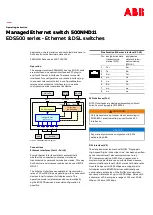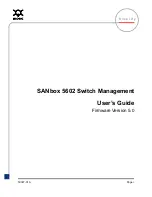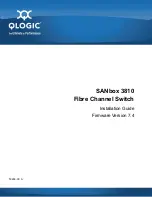
Troubleshooting MSDP Configuration
599
Troubleshooting
MSDP Configuration
The following sections provide troubleshooting guidelines for MSDP configuration.
MSDP Peer Always in
the Down State
Symptom
An MSDP peer is configured, but it is always in the down state.
Analysis
An MSDP peer relationship between the locally configured
connect-interface
interface address and the configured peer address is based on a TCP connection. If
the address of local
connect-interface
interface is inconsistent with the peer address
configured on the peer router, no TCP connection can be established. If there is no
route between the two peers, no TCP connection can be established.
Solution
1
Check the connectivity of the route between the routers. Use the
display ip
routing-table
command to check that the unicast route between the routers are
correct.
2
Further check that a unicast route exists between two routers that will become MSDP
peers and that the route leads to the two peers.
3
Check that the interface addresses of the MSDP peers are consistent. Use the
display
current-configuration
command to check that the address of the local
connect-interface interface is consistent with the address of the corresponding MSDP
peer.
No SA Entry in the SA
Cache of the Router
Symptom
An MSDP fails to send (S, G) forwarding entries using an SA message.
Analysis
You can use the
import-source
command to send the (S, G) entries of the local
multicast domain to the neighboring MSDP peer using SA messages. The
acl
keyword
is optional. If you do not use this keyword, all (S, G) entries will be filtered out by
default, that is, none of the (S, G) entries in the local multicast domain will be
advertised. Before the
import-source
command is carried out, the system will send
all (S, G) entries in the local multicast domain. If the MSDP fails to send the (S, G)
entries of the local multicast domain using SA messages, verify that the
import-source
command is configured correctly.
Solution
1
Check the connectivity of the route between the routers. Use the
display ip
routing-table
command to check that the unicast route between the routers are
correct.
2
Further check that a unicast route exists between two routers that will become MSDP
peers and that the route leads to the two peers.
3
Verify the configuration of the
import-source
command and the corresponding ACL
to ensure that the ACL rule filters the right (S, G) entries.
Summary of Contents for 5500 SI - Switch - Stackable
Page 24: ...24 ABOUT THIS GUIDE...
Page 50: ...50 CHAPTER 1 GETTING STARTED...
Page 54: ...54 CHAPTER 2 ADDRESS MANAGEMENT CONFIGURATION...
Page 78: ...78 CHAPTER 3 PORT OPERATION...
Page 88: ...88 CHAPTER 4 XRN CONFIGURATION...
Page 122: ...122 CHAPTER 8 VLAN VPN CONFIGURATION...
Page 216: ...216 CHAPTER 15 SSH TERMINAL SERVICES...
Page 268: ...268 CHAPTER 16 IP ROUTING PROTOCOL OPERATION...
Page 308: ...308 CHAPTER 17 NETWORK PROTOCOL OPERATION...
Page 349: ...349...
Page 350: ...350 CHAPTER 18 MULTICAST PROTOCOL...
Page 522: ...522 CHAPTER 22 FILE SYSTEM MANAGEMENT...
Page 584: ...584 CHAPTER 30 PASSWORD CONTROL CONFIGURATION OPERATIONS...
Page 600: ...600 CHAPTER 31 MSDP CONFIGURATION...
Page 614: ...614 CHAPTER 32 CLUSTERING...
Page 670: ...670 CHAPTER C AUTHENTICATING THE SWITCH 5500 WITH CISCO SECURE ACS...
















































